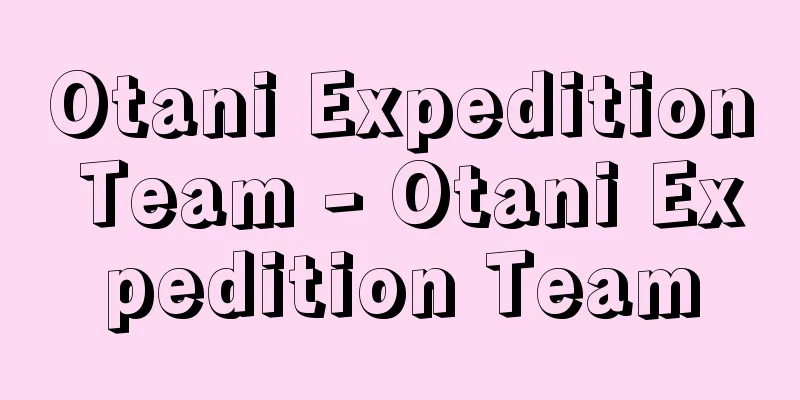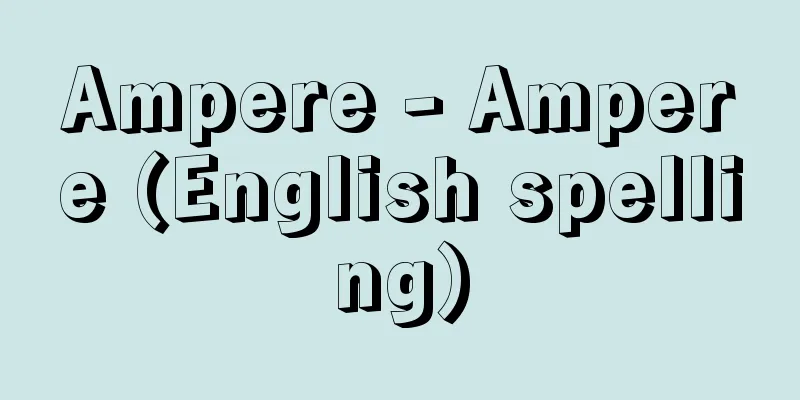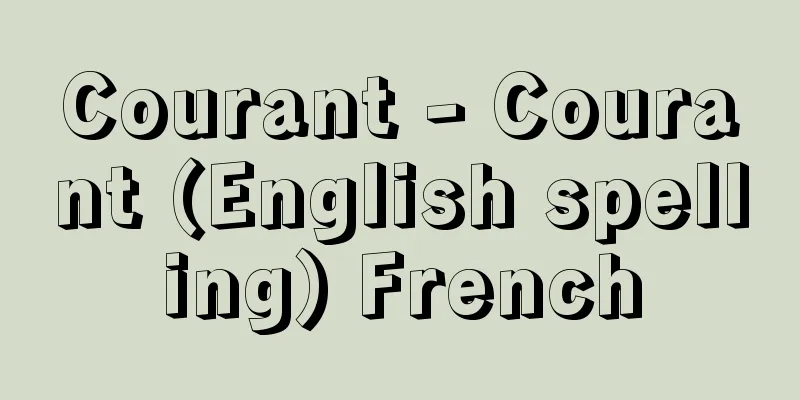Otani Expedition Team - Otani Expedition Team

|
The Central Asia Expedition was organized by Otani Kozui, the head priest of Nishi Honganji Temple. It was carried out three times: (1) in 1902 (Meiji 35), (2) from 1908 to 1909, and (3) from 1910 to 1914 (Meiji 43 to Taisho 3). The first expedition was conducted by Watanabe Tesshin and Hori Kenyu in the Khotan and Kucha regions, the second expedition was conducted by Tachibana Zuicho and Nomura Eijiro in Turfan, Lop Nur, Kucha, Khotan, etc., and the third expedition was conducted by Tachibana Zuicho and Yoshikawa Koichiro in the areas surveyed in the previous two expeditions, Dunhuang, and the areas north of Tianshan. Bower (died 1940), a British soldier serving in India, obtained Sanskrit manuscripts (estimated to date from the 5th century) relating to medicine and magic in Kucha, known as the Bower Manuscripts, and introduced them to the academic world. Aurel Stein, also from the UK, made his first Central Asian expedition in 1900-1901, surveying ruins in the Khotan region and bringing back a great number of artifacts, revealing that a glorious ancient culture had developed in this region. The academic world was extremely shocked and realized the need for academic research in East Turkistan, and the Otani Expedition was the first to respond to this. After that, survey teams were sent one after another from Britain, France, Germany, and other countries, but the activities of the Otani Expedition showed that Japan, like those countries, was also interested in archaeological research in Central Asia. There are several publications outlining the surveys, listing the artifacts collected, and researching the findings. Among the most important are the two-volume "Atlas of Western Region Archaeology" (1916, Kokkasha), the two-volume "New Record of the Western Regions" (1937, Arima Press), the "Catalogue of Plates in the Tokyo National Museum (Volume on the Future Products of the Otani Expedition)" (1971, Tokyo National Museum), and the seven-volume "Study of Western Region Culture" (1958-1963, Hozokan). [Kazuo Eno, May 19, 2017] [Reference item] |Source: Shogakukan Encyclopedia Nipponica About Encyclopedia Nipponica Information | Legend |
|
西本願寺門主の大谷光瑞(こうずい)が組織した中央アジア探検隊。(1)1902年(明治35)、(2)1908~1909年、(3)1910~1914年(明治43~大正3)の3回にわたって行われた。第1回はホータン、クチャ地域を渡辺哲信(てっしん)、堀賢雄(けんゆう)、第2回はトゥルファン、ロプノール、クチャ、ホータンなどを橘瑞超(たちばなずいちょう)、野村栄二郎、第3回は、前2回の調査地と敦煌(とんこう)、および天山北路の諸地域を橘瑞超、吉川小一郎に調査させた。 インドに勤務していたイギリス軍人バウアー(1940没)がクチャで医術と呪術(じゅじゅつ)とに関するサンスクリット語の写本(5世紀のものと推定される)、すなわちいわゆるバウアー・マヌスクリプツを入手して学界に紹介し、同じくイギリスのオーレル・スタインが1900~1901年、その第1回の中央アジア探検を行ってホータン地域の遺跡の調査を行い、おびただしい遺物を持ち帰って、この地域に輝かしい古代文化が発達していたことを明らかにした。世界の学界は異常な衝撃を受け、東トルキスタンの学術的調査の必要を悟ったが、大谷探検隊は真っ先にこれに反応したものである。その後、イギリス、フランス、ドイツなどから調査団が相次いで派遣されたが、大谷探検隊の活動によって、日本もまたそれらの諸国に劣らず、中央アジアの考古調査に関心の少なくないことを示したわけである。 調査の概要と採集遺物の目録および研究については、いくつかの刊行物があるが、なかでも『西域考古図譜』2冊(1916・国華社)、『新西域記』2冊(1937・有光社)、『東京国立博物館図版目録(大谷探検隊将来品篇(へん))』(1971・東京国立博物館)、『西域文化研究』全7冊(1958~1963・法蔵館)などは重要である。 [榎 一雄 2017年5月19日] [参照項目] |出典 小学館 日本大百科全書(ニッポニカ)日本大百科全書(ニッポニカ)について 情報 | 凡例 |
>>: Takejiro Otani - Takejiro Otani
Recommend
Cold agglutinin disease
… Cold agglutinins usually agglutinate blood cell...
Aso Uchinomaki [Hot Springs] - Aso Uchinomaki
A hot spring in Aso Town, Aso District, northeaste...
Polygonaceae
... Polygonum is a large genus of the Polygonacea...
martyrdom
…In the Buddhist cultural sphere, the idea of b...
Ferry, Jules (-François-Camille)
Born: April 5, 1832, Saint-Diés, Beaujeu [Died] Ma...
《Cow Memorial Service》 - Ushikuyo
…In April of the same year, he chaired the first ...
Cai Yong - Saiyou
A Chinese literati and scholar of the Later Han D...
Manilius, Marcus
A Roman poet active in the first half of the 1st c...
Anti-Rightist Struggle - Fan-you-pai touzheng
An ideological and political struggle against so-c...
Coney Island
A seven-mile (11 km) stretch of sandy beach on the...
Fire-grilled - Ohitaki
Also written as Onitaki. A fire festival held in N...
Jinzhou
A prefecture-level city in the southwest of Liaon...
Takao Heibei - Takao Heibei
Year of death: June 26, 1923 Year of birth: Decemb...
Möhlin (English spelling)
...The name "Eastern type" was likely d...
aloenin
…The folk medicine Aloe vera was introduced to Ja...








![Tamamura [town] - Tamamura](/upload/images/67cc26360cd15.webp)
